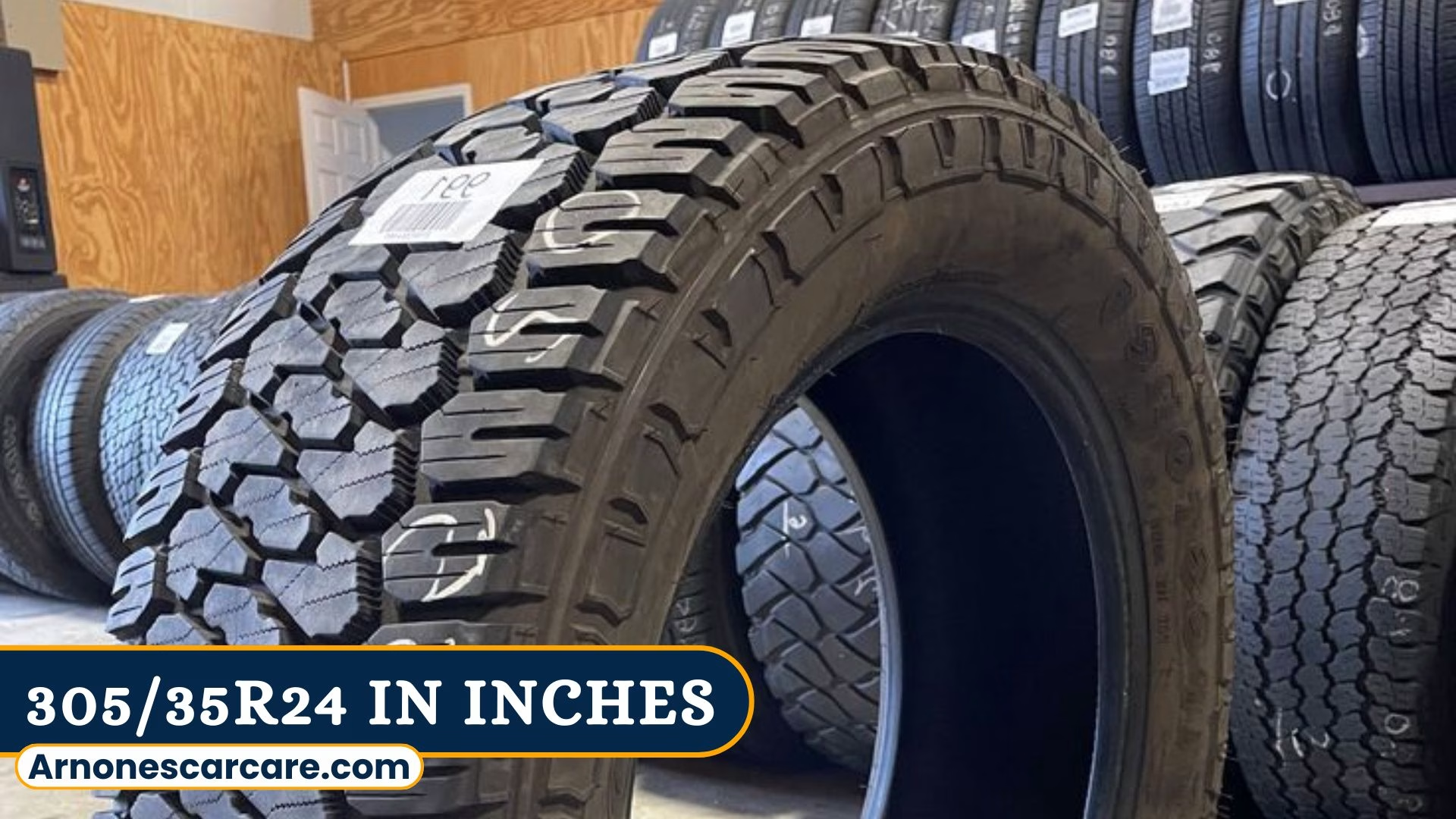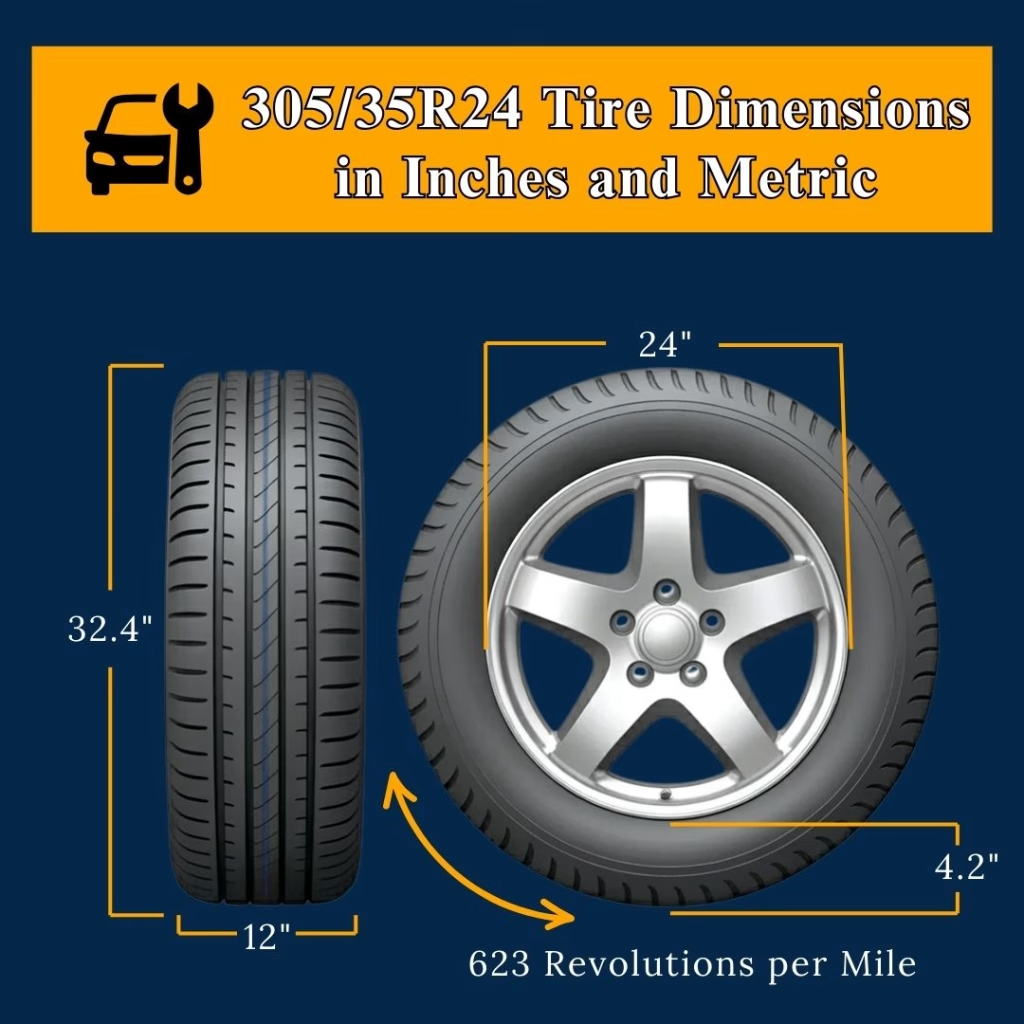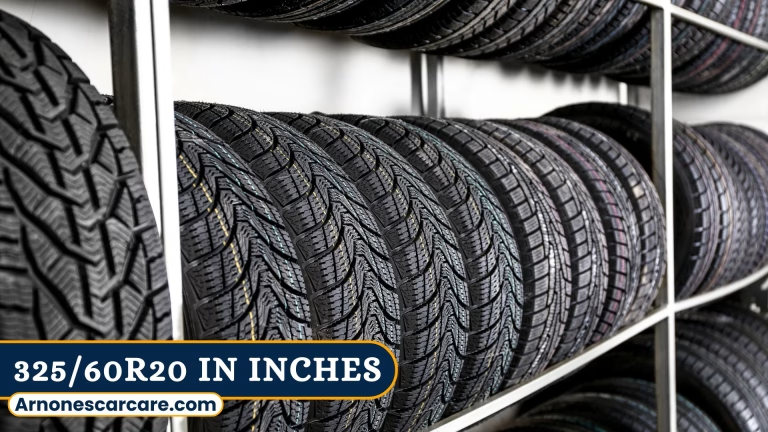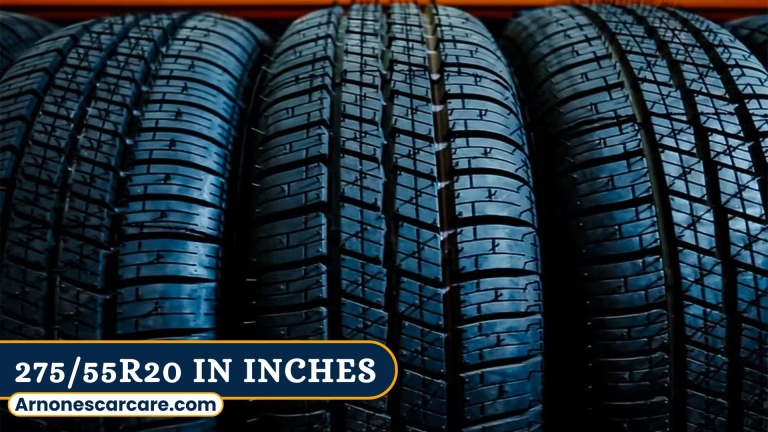
The 305/35R24 tire size measures 32.4 inches (823 mm) in diameter, 12 inches (305 mm) in tread width, and fits a 24-inch (609.6 mm) wheel. It has a sidewall height of 4.2 inches (107 mm), a circumference of 101.8 inches (2585 mm), and makes about 622 revolutions per mile (386 per km).
This size is often chosen for trucks, SUVs, and high-performance vehicles due to its aggressive stance, sharp handling, and commanding road presence. With its low-profile design, the 305/35R24 excels in stability and control but may trade off some ride comfort and fuel efficiency.
You can explore more details about Tire Sizes to understand the different types and dimensions for various vehicle needs.
305/35R24 Tire Dimensions in Inches and Metric
Now that we know what 305/35R24 means, let’s convert it into inches so you can understand its exact size and measurements.

Key Measurements of 305/35R24 in Inches and Metric
| Specification | Inches | Millimeters (mm) |
| Tire Width | 12.0 in | 305 mm |
| Sidewall Height | 4.2 in | 107 mm |
| Overall Diameter | 32.4 in | 824 mm |
| Circumference | 101.7 in | 2587 mm |
| Revolutions Per Mile | 623 revs/mile | 386 revs/km |
Understand the Meaning of 305/35R24
Tire size markings may seem complicated at first, but they actually give you all the key details about a tire’s dimensions and structure. Here’s what 305/35R24 stands for:
- 305 – This is the tire width in millimeters, measuring 305mm from sidewall to sidewall. A wider tire means better traction and grip on the road.
- 35 – This number is the aspect ratio, meaning the sidewall height is 35% of the tire’s width. A lower aspect ratio means a stiffer ride but better cornering stability.
- R – Stands for Radial construction, which is the most common design used in modern tires. Radial tires offer improved durability, smoother handling, and better fuel efficiency.
- 24 – Refers to the wheel diameter (rim size) in inches. A 24-inch wheel gives a sporty and aggressive look but may make the ride slightly firmer.
Understanding this breakdown helps you determine if this tire is compatible with your vehicle and driving style.
How to Convert 305/35R24 to Inches?
To manually calculate these measurements, use the following formulas:
- Tire Width: Convert millimeters to inches:
305 ÷ 25.4 = 12 inches - Sidewall Height: Multiply the width by the aspect ratio:
305 × 0.35 = 107mm → Convert to inches: 107 ÷ 25.4 = 4.2 inches - Overall Diameter: Add twice the sidewall height to the wheel diameter:
(4.2 × 2) + 24 = 32.4 inches - Tire Circumference: Multiply the diameter by π (3.1416):
32.4 × 3.1416 = 101.7 inches - Revolutions Per Mile: Calculate how many times the tire rotates in one mile:
63,360 ÷ 101.7 = 623 revolutions per mile
These measurements help you understand how 305/35R24 tires compare to other sizes and how they might impact your vehicle’s speedometer, fuel efficiency, and performance.
Picking the right balance between performance and longevity can help extend your tire’s life.
How 305/35R24 Tires Change Your Driving Experience?
When choosing the right tires, it’s not just about size—it’s about how they affect your ride. The 305/35R24 tire size is known for its wide tread, low sidewall, and large diameter, all of which impact the way your vehicle drives. If you’re considering these tires, it’s important to understand how they affect traction, handling, comfort, and fuel efficiency.
Stronger Road Grip with a Wider Tire
One of the biggest advantages of a 305mm-wide tire is its increased contact with the road. More surface area means:
- Better traction on dry pavement, especially when accelerating.
- Stronger grip during braking, helping to reduce stopping distances.
- More stability at high speeds, making the ride feel more controlled.
However, wider tires can sometimes struggle in wet conditions, as they may have a higher risk of hydroplaning if the tread pattern isn’t optimized for rain.
Sharper Handling and More Responsive Steering
With an aspect ratio of 35%, these tires have shorter and stiffer sidewalls, which directly impact handling. What does this mean for your driving experience?
- Better cornering – The tire doesn’t flex as much, allowing for sharper turns.
- More responsive steering – You’ll feel more connected to the road.
- Greater high-speed stability – Less sidewall movement keeps the car planted.
While this makes for a sporty and precise ride, it also means you’ll feel more bumps and potholes, especially on rough roads.
305/35R24 Compared to Other Tire Sizes
Choosing the right tire isn’t just about size—it’s about performance trade-offs. Let’s see how the 305/35R24 stacks up against narrower tires and other wide options.
305/35R24 vs. Narrower Tires (e.g., 225mm Width)
- Traction & Braking: The 305/35R24 provides more road contact, offering better grip and stability, while a 225mm tire has less traction and weaker braking power.
- Handling & Steering: A wider tire with a stiff sidewall improves cornering and high-speed control, while a narrower tire feels softer but less responsive.
- Fuel Efficiency: Narrower tires reduce rolling resistance, improving fuel economy, while 305mm tires slightly lower MPG.
- Ride Comfort: The 225mm tire absorbs bumps better, making it smoother, while 305/35R24 tires offer a firmer, sportier ride.
Key Takeaway:
- 305/35R24 is best for traction, handling, and performance.
- 225mm tires are better for fuel efficiency and comfort.
305/35R24 vs. Similar Wide Tires (e.g., 295mm, 315mm Widths)
- Grip & Stability: A 315mm tire offers the most grip, while 305mm provides a balance, and 295mm has slightly less traction.
- Handling & Precision: 305mm is well-balanced, while 295mm feels more responsive, and 315mm may feel slightly heavier.
- Fuel Efficiency: A 295mm tire is more fuel-efficient, while 315mm consumes the most fuel due to increased rolling resistance.
- Ride Comfort: 305mm has a firmer ride, 295mm is slightly smoother, and 315mm is the firmest due to its wide profile.
Key Takeaway:
- 305/35R24 is a middle ground between grip, handling, and efficiency.
- 295mm tires are better for fuel economy, while 315mm tires maximize traction.
Which Vehicles Are Best for 305/35R24 Tires?
Great for SUVs and Trucks
For SUV and truck owners, these tires offer:
- Increased stability on highways.
- More grip for better control.
- A bold, aggressive look that stands out.
However, some vehicles may require suspension adjustments or fender modifications to prevent rubbing.
Ideal for Sports and Performance Cars
Performance cars benefit greatly from these tires because they:
- Improve cornering ability for high-speed turns.
- Provide a stiffer ride for more road feedback.
- Enhance acceleration and braking stability.
Fitment Considerations: Will They Fit Your Vehicle?
Before upgrading to 305/35R24, check:
- Wheel well clearance – Do your fenders have enough space?
- Suspension compatibility – Some vehicles may need adjustments.
- Speedometer accuracy – Larger tires can slightly affect readings.
If you’re looking for Tire Repair Service, we also offer specialized services to ensure the longevity and optimal performance of your tires.
FAQs
Q. How tall is a 305/35R24?
A 305/35R24 tire has an overall diameter of 32.4 inches (824mm). This includes the 24-inch wheel plus the sidewall height on both sides.
Q. Are 305/35R24 tires good for daily driving?
Yes, but they offer a firmer ride due to their low-profile sidewall. If comfort is a priority, consider a tire with a higher aspect ratio.
Q. Do 305/35R24 tires affect fuel efficiency?
Slightly. Wider tires create more rolling resistance, which can lower gas mileage compared to narrower options, but the impact is minor.






